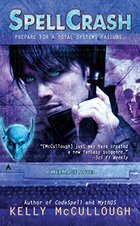If you have been watching the Astronomy chatter the past two days, you would have seen the headlines screaming about the possibility of life being found on Venus. Other less reputable sources are claiming that we have found definite proof of alien life. Both are inaccurate as even though we have found something that is easily explained by assuming the possibility of extra-terrestrial life there are other potential explanations that could cause the anomaly. So what is this discovery, you might ask which is causing people worldwide to start freaking out?
During analysis of spectrometer readings of Venus, scientists made a startling discovery high in its atmosphere; they found traces of phosphine (PH3) gas in Venus’s atmosphere, where any phosphorus should be in oxidized forms at a concentration (~20 parts per billion) that is hard to explain. It is unlikely that the gas is produced by abiotic production routes in Venus’s atmosphere, clouds, surface and subsurface, or from lightning, volcanic or meteoritic delivery (See the explanation below), hence the worldwide freak out. Basically the only way we know that this gas could be produced in the quantity measured is if there are anaerobic life (microbial organisms that don’t require or use oxygen) producing the gas on Venus. Obviously this doesn’t mean that there aren’t ways that we haven’t thought about yet that could be generating this gas. But the discovery is causing a big stir and will cause various space programs to start refocusing their efforts on Venus. India’s ISRO already has a mission planned to study the surface and atmosphere of Venus called ‘Shukrayaan-1‘ set to launch late 2020’s after the Mars Orbiter Mission 2 launches and you can be sure that they will be attempting to validate these findings when we get there.
The only way to conclusively prove life exists on Venus would be to go there and collect samples containing extra-terrestrial microbes. Since it’s impossible to prove a negative this will be the only concrete proof that we can trust. Anything else will still leave the door open for other potential explanations for the gas generation.
Here’s a link to the press briefing on the possible Venus biosignature announcement from @RoyalAstroSoc featuring comment from several of the scientists involved.
The recent candidate detection of ppb amounts of phosphine in the atmosphere of Venus is a highly unexpected discovery. Millimetre-waveband spectra of Venus from both ALMA and the JCMT telescopes at 266.9445 GHz show a PH3 absorption-line profile against the thermal background from deeper, hotter layers of the atmosphere indicating ~20 ppb abundance. Uncertainties arise primarily from uncertainties in pressure-broadening coefficients and noise in the JCMT signal. Throughout this paper we will describe the predicted abundance as ~20 ppb unless otherwise stated. The thermal emission has a peak emission at 56 km with the FWHM spans approximately 53 to 61 km (Greaves et al. 2020). Phosphine is therefore present above ~55 km: whether it is present below this altitude is not determined by these observations. The upper limit on phosphine occurrence is not defined by the observations, but is set by the half-life of phosphine at <80 km, as discussed below.
Phosphine is a reduced, reactive gaseous phosphorus species, which is not expected to be present in the oxidized, hydrogen-poor Venusian atmosphere, surface, or interior. Phosphine is detected in the atmospheres of three other solar system planets: Jupiter, Saturn, and Earth. Phosphine is present in the giant planet atmospheres of Jupiter and Saturn, as identified by ground-based telescope observations at submillimeter and infrared wavelengths (Bregman et al. 1975; Larson et al. 1977; Tarrago et al. 1992; Weisstein and Serabyn 1996). In giant planets, PH3 is expected to contain the entirety of the atmospheres’ phosphorus in the deep
atmosphere layers (Visscher et al. 2006), where the pressure, temperature and the concentration of H2 are sufficiently high for PH3 formation to be thermodynamically favored. In the upper atmosphere, phosphine is present at concentrations several orders of magnitude higher than predicted by thermodynamic equilibrium (Fletcher et al. 2009). Phosphine in the upper layers is dredged up by convection after its formation deeper in the atmosphere, at depths greater than 600 km (Noll and Marley 1997).
An analogous process of forming phosphine under high H2 pressure and high temperature followed by dredge-up to the observable atmosphere cannot happen on worlds like Venus or Earth for two reasons. First, hydrogen is a trace species in rocky planet atmospheres, so the formation of phosphine is not favored as it is in the deep atmospheres of the H2-dominated giant planets. On Earth H2 reaches 0.55 ppm levels (Novelli et al. 1999), on Venus it is much lower at ~4 ppb (Gruchola et al. 2019; Krasnopolsky 2010). Second, rocky planet atmospheres do not extend to a depth where, even if their atmosphere were composed primarily of hydrogen, phosphine formation would be favored (the possibility that phosphine can be formed below the surface and then being erupted out of volcanoes is addressed separately in Section 3.2.2 and Section 3.2.3, but is also highly unlikely).
Despite such unfavorable conditions for phosphine production, Earth is known to have PH3 in its atmosphere at ppq to ppt levels (see e.g. (Gassmann et al. 1996; Glindemann et al. 2003; Pasek et al. 2014) and reviewed in (Sousa-Silva et al. 2020)) PH3’s persistence in the Earth atmosphere is a result of the presence of microbial life on the Earth’s surface (as discussed in Section 1.1.2 below), and of human industrial activity. Neither the deep formation of phosphine and subsequent dredging to the surface nor its biological synthesis has hitherto been considered a plausible process to occur on Venus.
More details of the finding are explained in the following two papers published by the scientists:
Whatever the reason for the gas maybe, its a great finding as it has reenergized the search for Extra-Terrestrial life and as we all know: “The Truth is out there…”.
– Suramya




 (4.5/5)
(4.5/5)


